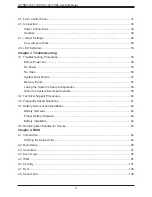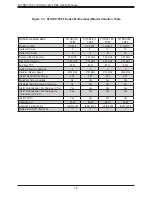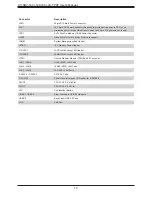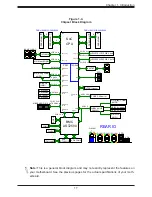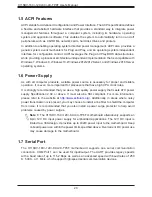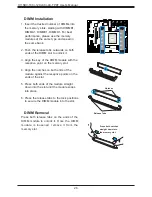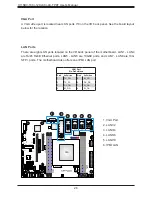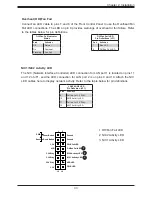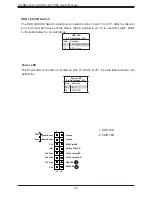
20
X11SDV-16C/-12C/-8C/-4C-TP8F User's Manual
1.5 ACPI Features
ACPI stands for Advanced Configuration and Power Interface. The ACPI specification defines
a flexible and abstract hardware interface that provides a standard way to integrate power
management features throughout a computer system, including its hardware, operating
system and application software. This enables the system to automatically turn on and off
peripherals such as CD-ROMs, network cards, hard disk drives and printers.
In addition to enabling operating system-directed power management, ACPI also provides a
generic system event mechanism for Plug and Play, and an operating system-independent
interface for configuration control. ACPI leverages the Plug and Play BIOS data structures,
while providing a processor architecture-independent implementation that is compatible with
Windows 7, Windows 8, Windows 10, Windows 2012/2012 Server, and Windows 2016 Server
operating systems.
1.6 Power Supply
As with all computer products, a stable power source is necessary for proper and reliable
operation. It is even more important for processors that have high CPU clock rates.
It is strongly recommended that you use a high quality power supply that meets ATX power
supply Specification 2.02 or above. It must also be SSI compliant. For more information,
please refer to the website at
. Additionally, in areas where noisy
power transmission is is present, you may choose to install a line filter to shield the computer
from noise. It is recommended that you also install a power surge protector to help avoid
problems caused by power surges.
Note 1:
The X11SDV-16C/-12C/-8C/-4C-TP8F motherboard alternatively supports an
8-pin 12V DC input power supply for embedded applications. The 12V DC input is
limited to a 36A design. It provides up to 432W power input to the motherboard. Keep
onboard power use within the power limits specified above. Overcurrent DC power use
may cause damage to the motherboard.
1.7 Serial Port
The X11SDV-16C/-12C/-8C/-4C-TP8F motherboard supports one serial communication
connection. COM Port 1 can be used for input/output. The UART provides legacy speeds
with a baud rate of up to 115.2 Kbps as well as an advanced speed with baud rates of 250
K, 500 K, or 1 Mb/s, which support high-speed serial communication devices.

